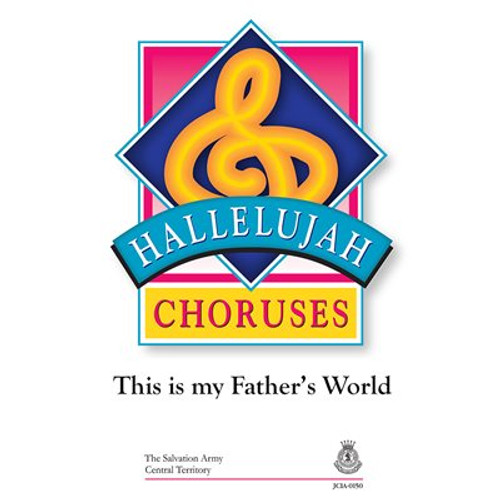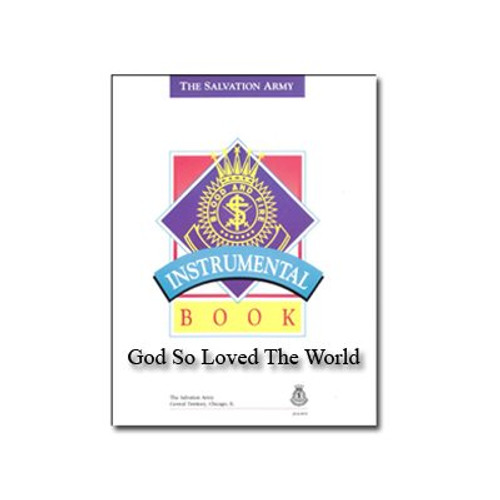Product Description
To Worlds Unkown
Rhapsody
Composer: Stephen Bulla
Produced by The Salvation Army - Central Territory
Score Sample
NotesThis is a digital product. After purchasing you'll be able to download it from Account -> Orders -> Select order number-->
Score Notes
Notes:
Comments by Staff Bandmaster William Himes, Music & Gospel Arts Secretary, USA Central Territory
Stephen Bulla has created a rhapsody of considerable craft, color and technical challenge. Written for the Chicago Staff Band's centennial (1907-2007), this work is a celebration of music ministry for brass and percussion.
Introduction - bar 31: Opening with a flourish of counterpoint, it is essential for each section enter confidently and with rhythmic precision. Bars 12-17 employ cluster chords that will require careful balance. (Pay particular attention to the chord intonation at bars 30- 31, especially the half-step between 2nd cornet and 1st horn.)
Bars 32-57: The first presentation of the main theme, "Will your anchor hold?" is light, syncopated and straightforward, with playful interjections from euphonium, flugel and tubas, respectively.
Bars 58-91: This section will present some of the most technically challenging music for almost every instrument group. Players should strive to observe the given dynamics (mf-f) and avoid heavy articulations. (Lighter is better.)
Bars 91-96: Although the trombone section is the only accompaniment to the B= bass solo, care must be taken avoid obscuring this rare orchestration, given the low register and quiet dynamic (mp).
Bars 97-138: There is no question that the cornet duet and horn solo in bars 97-100 are down-right tricky! But the key to the feel of these few bars will be the gentle 9/8 sway provided by euphonium and Eb bass. The composer skillfully exploits the duple character of the melody (cornets) and countermelody (horns) against the compound meter in the accompaniment (trombones, basses). This will require ensemble and metrical independence from each group.
Bars 139-152: This intense and plaintive section at bars 126-133 soon fades to into a tranquil, transparent rendering of Augustus Toplady's hymn tune, ""Rock of ages,"" tenderly scored for solo flugel.
Bars 153-160: In just two bars (151-152) the mood and tempo increase slightly as the music reaches a brief moment of intensity (bars 153-156), quickly subsiding to feature another rare soloist, the bass trombone. Therefore the lead-in decrescendo must be quick and steep in order for the soloist to be heard from the outset.
Conductors will want to take full advantage of the fermata at bar 160 in order to set for the new tempo (and sudden allegro) in the next section.
Bars 161-211: Carefully gauge the speed (126) of this joyful episode to assure clarity through the technical passages as they come and go (i.e., bars 183-185, 200-202.)
Bars 212-end: The percussion section's crescendo into bar 213 is essential to the climactic final chorus of ""We have an anchor."" A scintillating coda from bar 220 to the end calls for the brightest tempo (138) while holding in reserve the biggest sounds for the final two bars. Again, percussion - especially timpani - are key to this triumphant conclusion.
Program Note:This exciting music is based primarily on melodic fragments from the song "Will your anchor hold?," depicting the "storms of life" and the persistent question of drifting or standing firm. A reflective setting which follows features "Rock of Ages" (solo flugel) and portrays the eternal reward of the faithful: "When I soar to worlds unknown, see thee on thy judgment throne, Rock of ages, cleft for me, let me hide myself in thee." (Augustus Toplady) This challenging work concludes with a triumphant return to the opening chorus: "We have an anchor that keeps the soul steadfast and sure while the billows roll."
Program Note:
This colorful selection uses three songs of contrasting idiom to portray a progression of the human condition from despair to triumph:
Although this is a more extended work (approximate duration: 9:00), the inclusion of optional introductions and endings provides added usefulness of presenting singular performances of these three songs as follows:
Sometimes I feel like a motherless child: Beginning to optional ending at bars 39-40.
Reach out and touch: Bar 42 to optional ending at bars 110-113.
Storm the forts of darkness: Begin with snare drum roll (can be a pause) one beat before 117. Play to end as written.
Program Note:
This beautiful setting for solo trombones and band of the folk song O Waly, O Waly is often associated with the words of Isaac Watts:Note to the Conductor:
We are pleased to present this sensitive setting as it was initially conceived for solo trombone. Written for the Amsterdam Staff Band's 2005 tour of the United Kingdom, it was later adapted as a feature for trombone ensemble, at the request of Salvationist Publishing & Supplies, where it appears in 2009 as General Series 2059.
We are grateful to SP&S for kindly giving permission to publish this solo version in the American Festival Series. Of this work, the arranger, Olaf Ritman writes: "I consider this song my personal testimony."
Beginning to bar 12: The accompaniment, particularly at the opening and closing of the piece, is atmospheric, with suspended muted chords supporting the rubato trombone solo. The judicious use of percussion (chimes, bass drum and suspended cymbal) will add to the color and mood. Be sure to cue the chimes at bars 3 and 6.
at bar 4, a clear downbeat cure for the bass drum will help clarify tempo following the soloist's pause. Also give attention to the muted sforzando in cornets and trombones in bar 8.
Bars 13-52: Following the ritardando at bar 12, it is essential for the conductor to establish the correct tempo at bar 13, allowing the soloist lyrical freedom and the ability to sustain long phrases as the tune begins at bar 16. The descending scale gesture at bar 39 should be measured, yet not overstated.
Bars 53-74: There is a slight slowing of tempo as soprano, flugel and horns take the theme while cornets, trombones and euphonium adding countermelody.
Bars 75 to end: Returning to the opening tempo, it will again be helpful to give clear cues for the chimes, bass drum and triangle from bars 75 to the end.
[Note: This solo can be heard on the Chicago Staff Band recording,Kurios, performed by Brett Tolcher]
Program Note:
The tune Randolph, by preeminent English composer Ralph Vaughan Williams was first published in 1906 as a setting of Jeremiah Rankin's hymn, of which the first verse reads:
Note to the Conductor:
William Gordon's stunning four verse setting of Randolph progresses from the quiet simplicity of unison cornets and with each succeeding verse builds to a magnificent organ-like finale.
Gratitude is expressed to the publisher and copyright holder, Oxford University Press, for granting permission to publish this brass setting in the American Festival Series.
Beginning to bar 9: A ceremonial snare drum roll is the sole accompaniment to the cornets opening unison rendering of the tune.
Bar 10-17: The mellow instruments (flugel, horns, baritones and euphoniums) provide a beautiful change of color here with 2nd horn, baritones and euphonium seamlessly adding harmony.
Bars 18-26: A two beat snare and bass drum roll signals the entrance of the cornets and trombones in a more brilliant third verse setting. Here the bass trombone is essential (cued in Eb bass). Bring out the rising soprano cornet line from bar 22.
Bar 27 to end: A dramatic percussion roll precedes the "open pipes" organ like sounds of the final verse at bar 27. Be sure to observe the swell in bar 30, followed by a dramatic decrescendo before building to the final climatic chords. Avoid any tendency to overblow while striving for the full sonorities of this majestic finale.
[Note: this setting is especially effective when performed as a benediction "in the round" with players grouped by sections surrounding the audience.]







